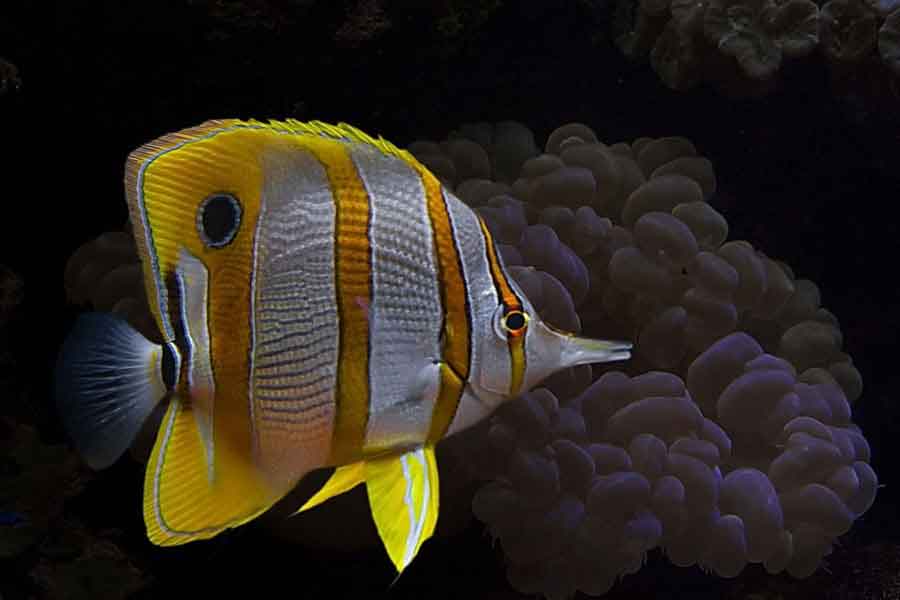
In the coral reef, everyone seems to be hungry. Perhaps it’s because obtaining daily sustenance is not easy amidst so much competition. The big fish eats the small fish, and the small fish eats whatever it can or whatever is left for it to eat. Being faster, more aggressive, or smarter seems to be the general rule for feeding conveniently.
The friendly butterfly fish has adapted its body to obtain a strip of food that is either wasted or unreachable by other fish. Through the long process of evolution, its mouth has elongated, giving it an appearance of an extendable beak. The very small jaws have moved to the tip of its snout. With this tool, the butterfly fish can access the small crevices and cracks in the coral, from where it scrapes off moss with its tiny teeth, which serves as its food.
Of course, it’s not a lot of food, but it doesn’t need more. Its small, conveniently flattened body allows it to move among the intricate corals. It doesn’t need to be fast or aggressive, so it doesn’t spend too much energy in securing its sustenance. It’s an ideal equation when food is scarce. Butterfly fish have adapted so well to this type of feeding that it has been observed that when the same moss was presented to them on a rock, they didn’t take it unless it was introduced into the small cracks in the bottom rocks for them to reach it themselves.
Being slow, calm, and consuming little food is ideal for energy expenditure, although it’s not good for defending against predators. But cunning surpasses speed. On each of its sides, the butterfly fish has a large black spot known as a «false eye,» while a linear spot hides the true eye. When a predator sees it, it sees a large eye, which is likely to belong to a big mouth, and it chooses another prey. This trick is also used by many types of terrestrial butterflies, hence their name.
Submissive, timid, almost distracted, sometimes elusive, always beautiful—butterfly fish are the most stunning creatures in the depths. They bring life and movement to the coral. They are so fragile and gentle that when divers see them, we slow down our breathing to avoid scaring them with the noise of our bubbles. We remain still at the bottom, trying to comprehend such beauty in motion.
«You cannot defend what you do not love, and you cannot love what you do not know.»

